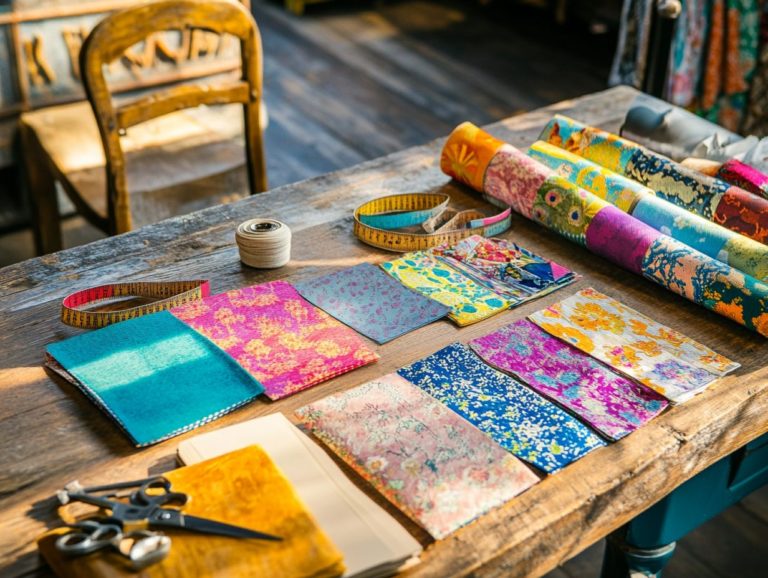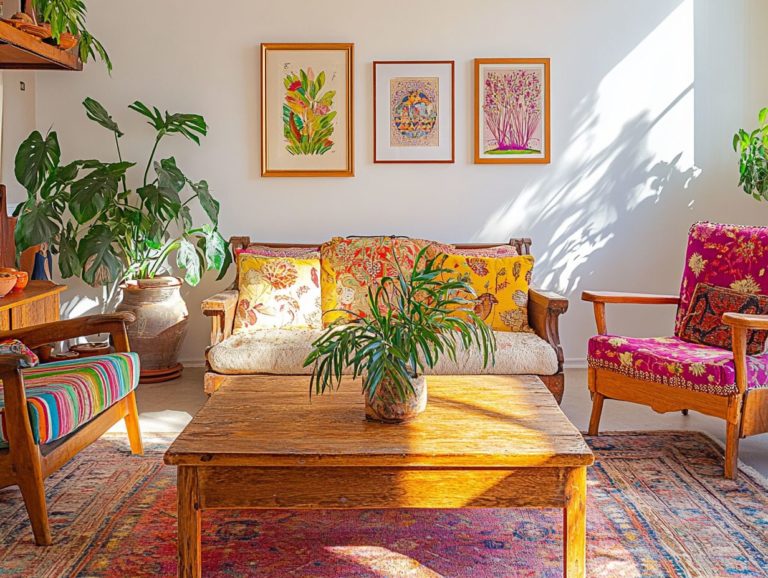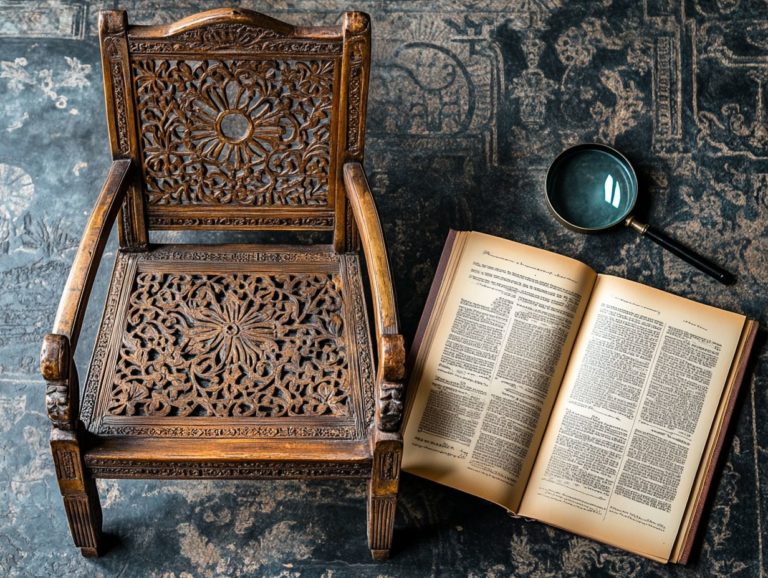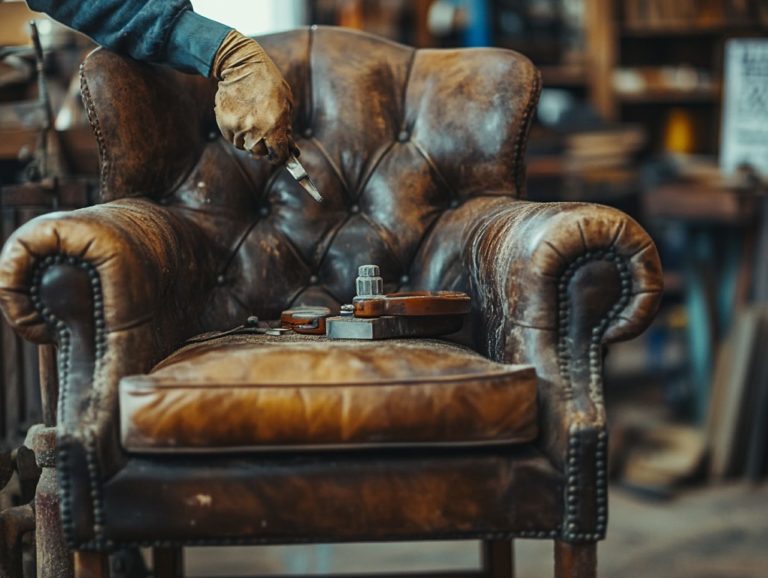DIY Restoration: The Best Practices to Follow
DIY restoration is more than just a trend. It s a rewarding journey that allows you to revitalize your space while staying on budget.
This guide provides essential tools and materials for your project. You’ll learn best practices and how to avoid common pitfalls.
You ll uncover best practices, identify common pitfalls to sidestep, and recognize vital safety precautions.
Whether you re just starting out or you ve got a wealth of experience under your belt, this information will equip you to turn your creative methods, including refinishing techniques and furniture cleaning, visions into tangible realities.
Contents
- Key Takeaways:
- Understanding DIY Restoration
- Benefits of DIY Restoration
- Preparation for DIY Restoration
- Best Practices for DIY Restoration
- Mistakes to Avoid in DIY Restoration
- Safety Precautions for DIY Restoration
- Frequently Asked Questions
- What is DIY Restoration and why is it important?
- What are the best practices to follow when doing DIY Restoration?
- Should I always use professional-grade materials for DIY Restoration?
- Are there any risks or dangers with DIY Restoration?
- Is DIY Restoration suitable for every project?
- What are some tips for successful DIY Restoration?
Key Takeaways:
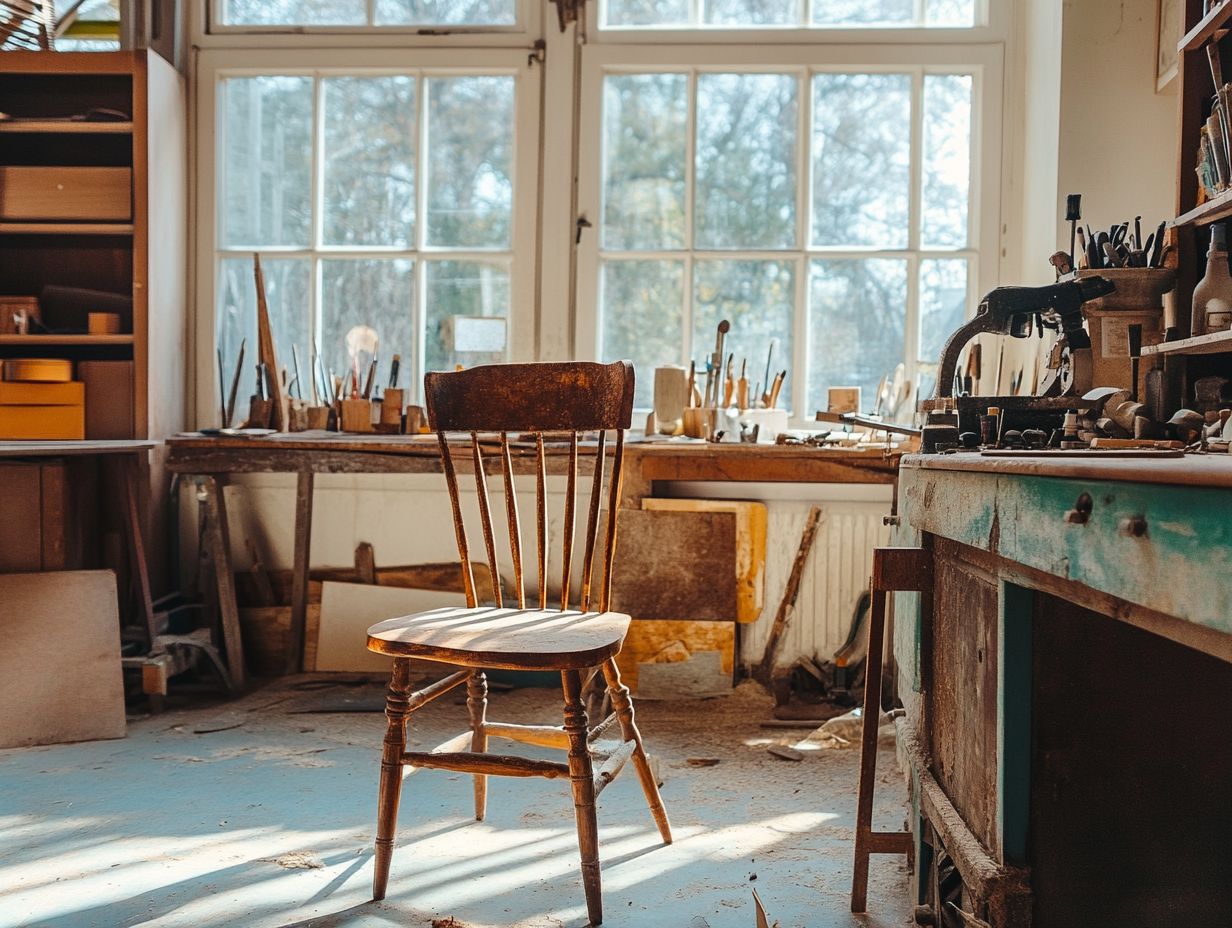
- DIY restoration is a cost-effective and rewarding way to improve your home.
- Proper preparation and following best practices are crucial for a successful project.
- Prioritize safety to avoid common mistakes like rushing or using the wrong tools.
Understanding DIY Restoration
Understanding DIY restoration means appreciating its importance for keeping old furniture alive and looking fresh. Heirloom pieces and antique furniture are often targets for restoration workshops, especially Mid Century Modern (MCM) furniture, which has surged in popularity among collectors and homeowners.
This journey isn t just about enhancing the aesthetic appeal of your vintage treasures; it s also a commitment to sustainability, with upcycled furniture (repurposing old items into something new) being a great option. This helps reduce waste and lessen the ecological impact of mass-produced furniture.
By diving into DIY restoration, you can embrace the art of furniture refurbishing, while honing valuable skills in care and maintenance that ensure long-lasting beauty and functionality.
What is DIY Restoration?
DIY restoration is all about rolling up your sleeves and breathing new life into your furniture and household items without calling in the pros. It s a chance for you to engage creatively with your belongings.
This movement has really taken off lately, as more people like you are on the hunt for sustainable alternatives to mass-produced items. Techniques such as upcycling, painting, and reupholstering can invigorate tired, outdated pieces whether it s that vintage chair begging for a makeover, a mid-century table in need of a fresh coat, or a rustic cabinet that needs a little love.
By diving into DIY restoration, you not only personalize your living space but also reap the therapeutic benefits of craftsmanship in the refinishing trade. There’s a unique sense of accomplishment that comes from transforming an old item into something truly special, fueling your creativity and self-expression. It’s a journey that celebrates both artistry in upcycled furniture transformation and resourcefulness in choosing the right restoration materials.
Benefits of DIY Restoration
The benefits of DIY restoration are numerous and truly rewarding. You not only save money on professional furniture restoration services, but also experience a deep sense of personal satisfaction as you transform heirloom furniture and vintage finds into cherished pieces that showcase your unique style.
This hands-on approach allows you to connect with your belongings in a meaningful way, turning each project into a testament to your creativity and craftsmanship.
Cost Savings and Personal Satisfaction
One of the most significant advantages of diving into DIY restoration is the remarkable cost savings, especially for residential restoration projects. By taking on these projects yourself and maintaining a focus on safety, you often sidestep the hefty price tags associated with professional services. You can still deliver high-quality results in furniture repair and restoration.
This financial benefit becomes particularly enticing in a world where budgets feel tighter than ever, and every dollar matters. By rolling up your sleeves, you not only save on labor costs but also gain the freedom to recycle materials and select your preferred finishes, making the final product distinctly your own.
You ll feel a rush as you transform a well-worn piece of furniture into something stunning and functional. Completing these restoration tasks brings a profound sense of accomplishment, infusing you with pride in your creative and innovative capabilities while elevating your home s aesthetic.
Preparation for DIY Restoration
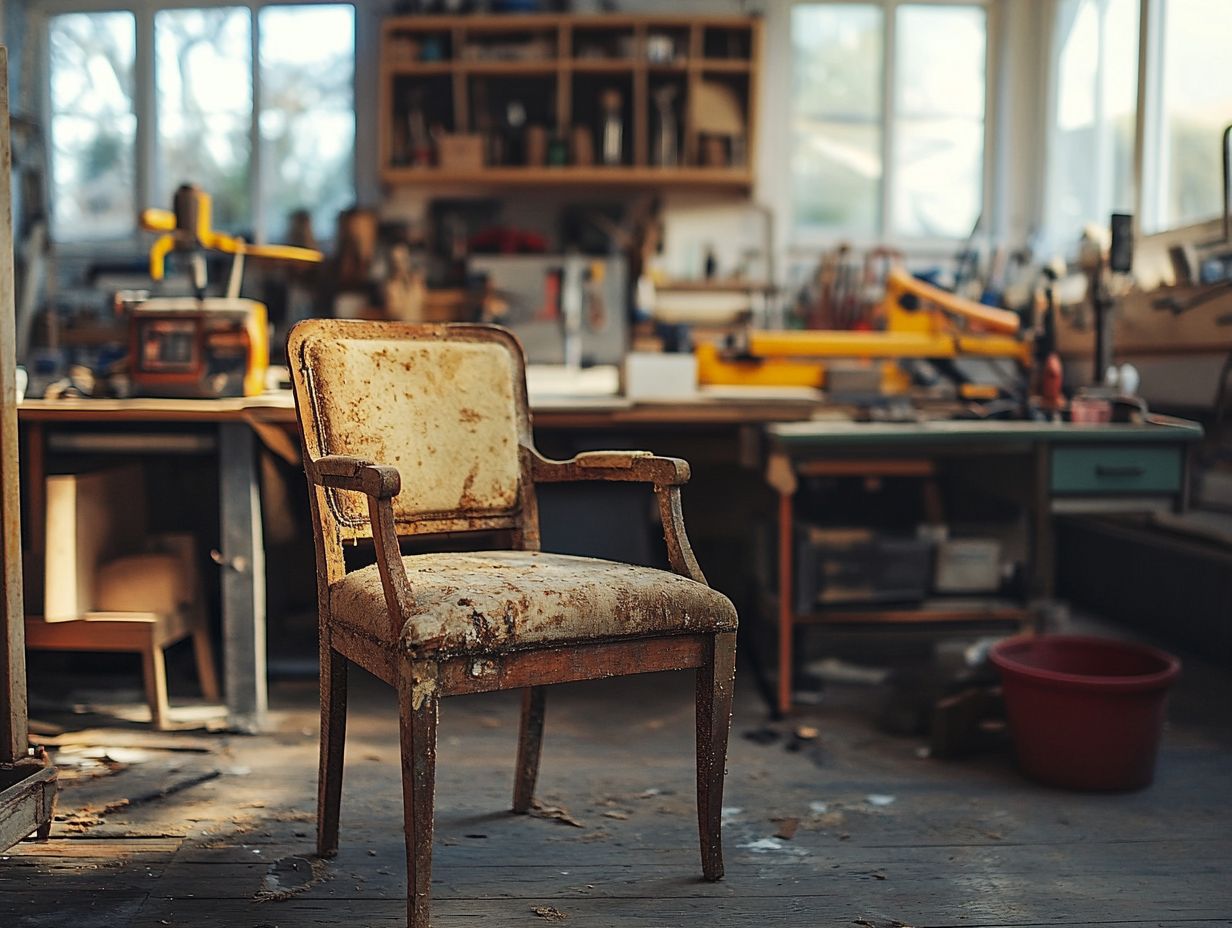
Preparation for your DIY restoration journey is vital. It lays the groundwork for a successful and rewarding project. Gather the right tools and materials, including lacquer finishes, Danish oil, and conversion varnish, while gaining a solid understanding of the restoration process.
This thoughtful approach ensures that your cherished heirloom pieces are treated with the utmost care and respect.
Essential Tools and Materials
Essential tools and materials for your DIY restoration projects include must-haves like sanders, brushes, and a variety of restoration materials such as lacquer finishes and Danish oil. These are crucial for achieving that professional touch.
Sanding is crucial for smoothing surfaces and preparing them for paint or finish, ensuring a flawlessly uniform finish. Brushes are equally vital, enabling you to apply paints and finishes with precision, helping you sidestep those dreaded drips and uneven layers.
Quality restoration materials like wood fillers and adhesives are key. They not only enhance structural integrity but also elevate the overall look of your piece. With the right combination of tools at your disposal, you can significantly elevate your restoration game. Additionally, understanding the importance of research in DIY restoration makes careful selection an essential step in your process.
Best Practices for DIY Restoration
Embracing best practices for DIY restoration involves a variety of techniques and strategies that guarantee effective and safe refinishing of your furniture. This approach not only elevates the quality and longevity of your restoration project but also nurtures a deeper connection with the art of craftsmanship.
Step-by-Step Process and Tips
A step-by-step process for your DIY restoration journey begins with assessing the piece, preparing your workspace, applying finishing methods, and ensuring that the final touches elevate the furniture’s appeal while following best practices.
- Start by carefully examining the furniture to spot any issues scratches, dents, or loose joints that need your attention. This initial assessment lays the groundwork for a successful restoration project.
- Next, create a clutter-free workspace; this not only ensures safety but also enhances your efficiency. Lay down protective coverings to shield your floors and invest in high-quality tools, especially during window restoration or furniture repair tasks, such as sanders, brushes, and stains to achieve the best possible results.
- As you dive into the refinishing process, employing techniques like sanding down the surface or applying a wood conditioner greatly enhances the outcome. Be mindful of the top 5 DIY restoration mistakes to avoid to ensure that every detail is finely tuned, making it a stunning addition to any home.
So grab your tools and get started on creating something amazing!
Mistakes to Avoid in DIY Restoration
Identifying the mistakes to avoid, such as neglecting lead paint safety, in DIY restoration is essential for achieving optimal results for your DIY restoration initiatives. Common pitfalls can easily derail your project, leading to outcomes that fall short of your expectations.
Therefore, it s crucial for you to remain vigilant about potential mistakes throughout the entire restoration process.
Common Pitfalls and How to Avoid Them

Common pitfalls in furniture restoration often stem from neglecting proper preparation, which can lead to costly errors. Additionally, skimping on refinishing techniques methods to restore the surface of your furniture can compromise the final product’s integrity and appearance. Furthermore, underestimating the importance of thorough cleaning may diminish your project’s quality. These oversights can lead to results that fall short of your expectations.
When diving into restoration projects, it’s easy to skip a proper assessment of the piece’s condition, which can lead to unexpected challenges later on. Effective preparation is the cornerstone of a successful restoration; it involves not just cleaning the surface but also identifying any structural issues that might need your attention. For more insights, check out these DIY restoration tips for refinishing wood.
Following specific refinishing techniques is crucial. Taking shortcuts could compromise the final product’s integrity and appearance. Additionally, neglecting thorough cleaning can leave behind residues that interfere with finishes, ultimately diminishing the quality of your restoration.
Investing time in these preparatory steps greatly boosts your chances of achieving a stunning Mid Century design piece that truly stands out. Don’t rush this crucial stage!
Safety Precautions for DIY Restoration
Safety precautions for your DIY restoration projects are essential to safeguard both yourself and the property at hand with proper furniture upkeep. Wearing the right protective gear is a must, especially when working with harmful substances. Remain vigilant about potential hazards that may arise from the restoration process.
Prioritizing safety not only enhances your restoration experience but also preserves the integrity of your project.
Protecting Yourself and Your Property
Protecting yourself and your property during DIY restoration starts with the essentials: proper protective gear like gloves, masks, and goggles should always be worn to mitigate risks. These items are your first line of defense against harmful dust, chemicals, and various hazards that can arise.
Beyond these basics, it’s wise to don sturdy clothing and supportive footwear, which act as shields against a range of potential injuries.
Ensuring your workspace is well-ventilated is another critical step this significantly minimizes the risk of inhaling toxic fumes or dust particles that are often associated with restoration materials.
Utilizing drop cloths and tarps is also a smart move; they help contain debris, safeguard surfaces, and prevent any unwanted damage.
Additionally, keeping a first-aid kit within arm’s reach can be invaluable. It allows you to address minor injuries right away, underscoring the importance of prioritizing safety at every stage of the restoration journey.
Frequently Asked Questions
What is DIY Restoration and why is it important?
DIY Restoration means fixing or renewing items yourself, without calling in professionals. It is important because it allows you to save money and learn new skills while also taking care of your belongings.
What are the best practices to follow when doing DIY Restoration?
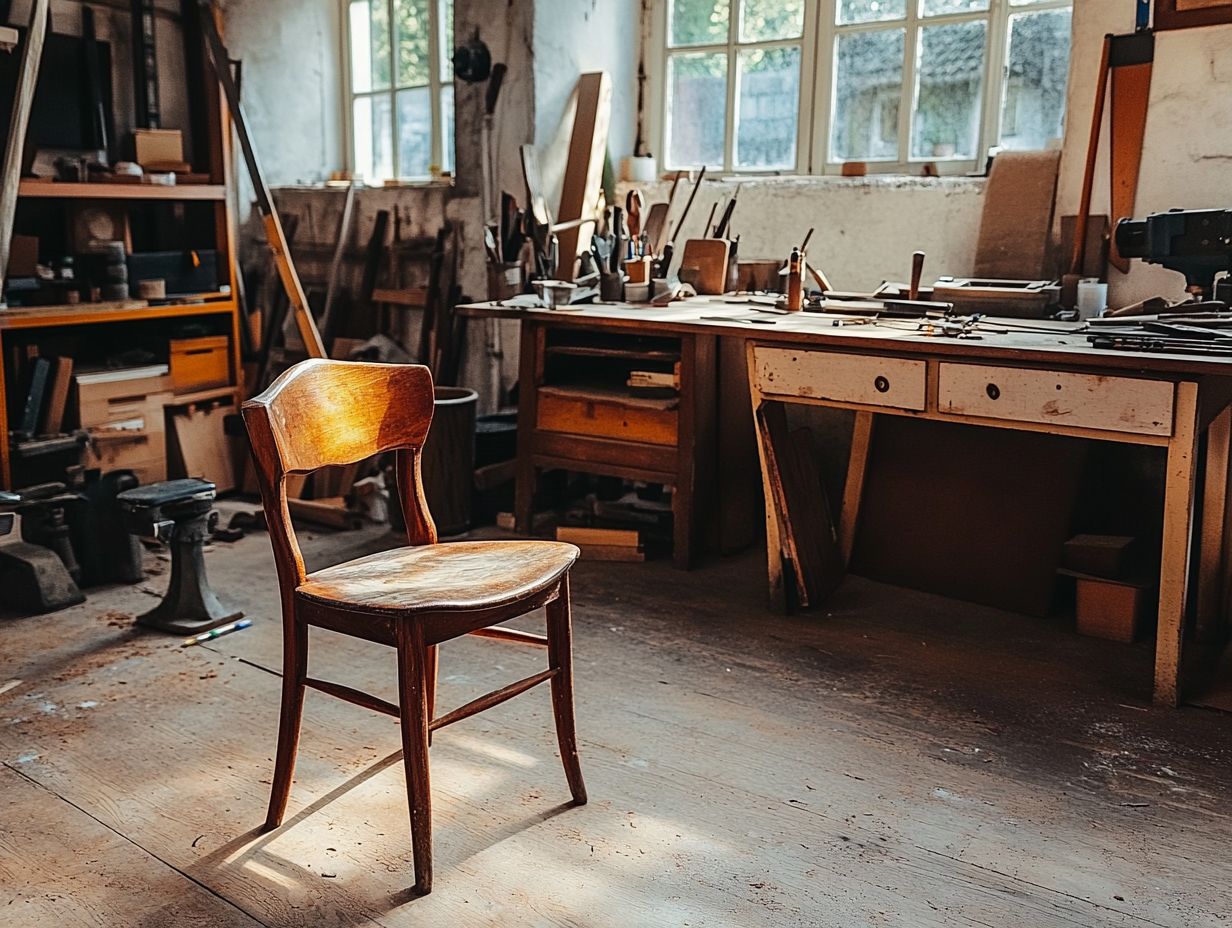
The first and most important practice is to properly research and plan your restoration project. This includes understanding the materials and tools needed, as well as the steps involved. Always follow safety precautions and wear protective gear. Additionally, take your time and don’t rush the process, and always seek help if needed.
Should I always use professional-grade materials for DIY Restoration?
No, you don’t always need professional-grade materials for DIY restoration. Choose quality materials that fit your project and ensure lasting results.
Are there any risks or dangers with DIY Restoration?
Yes, DIY restoration can come with risks. You may face injuries from tools, exposure to harmful substances, or damage to your belongings if things go wrong.
Is DIY Restoration suitable for every project?
No, not every project is suitable for DIY restoration. For tasks like electrical work or plumbing, it’s best to hire a professional for safety.
What are some tips for successful DIY Restoration?
Start with smaller projects to build your skills and confidence. Use the right tools and techniques. Have a detailed plan and budget before you begin.

